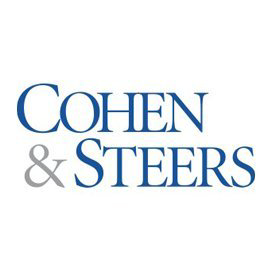
-
Earnings Per Share (EPS): $0.77, up from $0.68 sequentially.
-
Revenue: $133 million, compared to $122 million sequentially.
-
Operating Income: $47.6 million, compared to $42.5 million sequentially.
-
Operating Margin: Improved to 35.7%.
-
Total Expenses: Increased due to higher compensation and benefits, and distribution and service fees.
-
Compensation Ratio: Remained at 40.5%.
-
Effective Tax Rate: 25.1% for the quarter.
-
Liquidity: $348 million at quarter end, an increase from Q2.
-
Assets Under Management (AUM): $91.8 billion at quarter end, an increase of over $11 billion from the prior quarter.
-
Net Inflows: $1.3 billion firm-wide, first quarter of net inflows since Q1 2022.
-
US REIT Strategies Net Inflows: $1.3 billion.
-
Open-End Funds Inflows: $1.2 billion.
-
Institutional Advisory Net Inflows: $9 million.
-
Sub-Advisory Ex Japan Net Inflows: $131 million.
-
Japan Sub-Advisory Net Outflows: $32 million.
-
Unfunded Pipeline: $651 million.
-
Global Infrastructure Fund Return: 33.3% over the last 12 months, beating its benchmark by almost 5 percentage points.
Release Date: October 17, 2024
For the complete transcript of the earnings call, please refer to the full earnings call transcript.
Positive Points
-
Cohen & Steers Inc (NYSE:CNS) reported earnings of $0.77 per share, up from $0.68 sequentially, indicating strong financial performance.
-
Revenue increased to $133 million from $122 million sequentially, driven by higher average AUM.
-
Operating income rose to $47.6 million from $42.5 million sequentially, with an improved operating margin of 35.7%.
-
AUM increased by over $11 billion from the prior quarter, primarily due to market appreciation and net inflows.
-
95% of open-end fund AUM is rated 4 or 5-star by Morningstar, reflecting strong investment performance.
Negative Points
-
Total expenses were higher compared to the prior quarter, mainly due to increased compensation and benefits.
-
The effective tax rate for the quarter was 25.1%, which could impact net income.
-
The company expects G&A expenses to increase by 6% to 7% for the year, primarily due to investments in technology and infrastructure.
-
There are expected redemptions of $1 billion from advisory and sub-advisory clients, which could affect future inflows.
-
Margins for the first nine months of 2024 are lower compared to the same period last year, despite market tailwinds.
Q & A Highlights
Q: It seems like money is flowing into your higher fee areas. Can you maybe talk about how you expect the fee rate and incremental margins to be for the new business that’s coming online? A: Yes, as you properly noted, the inflows are going into certain of the open-ended funds which tend to be the higher fee. We are pleased with that flow, and our strong investment performance puts us in a good position to compete for institutional advisory business with attractive fees. Our average fee rates have been consistent over the past three years, and we expect this stability to persist.
Q: You mentioned your two newer focuses over the next couple of years are active ETFs and private real estate. How are you approaching developing them, and what do you think it takes to be successful in those areas? A: Investors now prefer vehicles like ETFs, and we are leading with our core strategies in real estate and preferreds. We are bringing on talent to help with the launch of active ETFs. For private real estate, our non-traded REIT is exciting, focusing on mispriced property sectors and using listed real estate to complement private allocations, which has worked well so far.
Q: Could you provide additional color on the nature of last quarter’s inflows into your US real estate strategies? Were they broad-based or driven by a few lumpier mandates? A: We had a large allocation from a disciplined allocator, which is a positive sign as they tend to lead in cycle turns. While this is counted in wealth flows, it resembles an institutional allocation. We believe the wealth channel is still early in returning to our asset classes, and flows should broaden as the cycle progresses.
Q: Your operating margins showed improvement last quarter, but they are lower compared to last year. What will drive margin expansion next year, and how flexible is your expense base? A: Last year’s margin was affected by asset class depreciation and building our private real estate capabilities. Going forward, appreciation holding and raising AUM in private real estate will help margins. As we start to raise AUM in our private real estate business, it will offset the expense load in our cost structure.
Q: With your balance sheet cash and securities building, will your capital return framework shift as we enter a more conducive macro backdrop? A: We maintain a strong balance sheet due to the nature of investing in liquid markets. Our strategy is to have a predictable and growing quarterly dividend, and we have paid special dividends in the past. Our balance sheet is very strong, and with market appreciation, our cash flow profile is improving.
For the complete transcript of the earnings call, please refer to the full earnings call transcript.
This article first appeared on GuruFocus.
